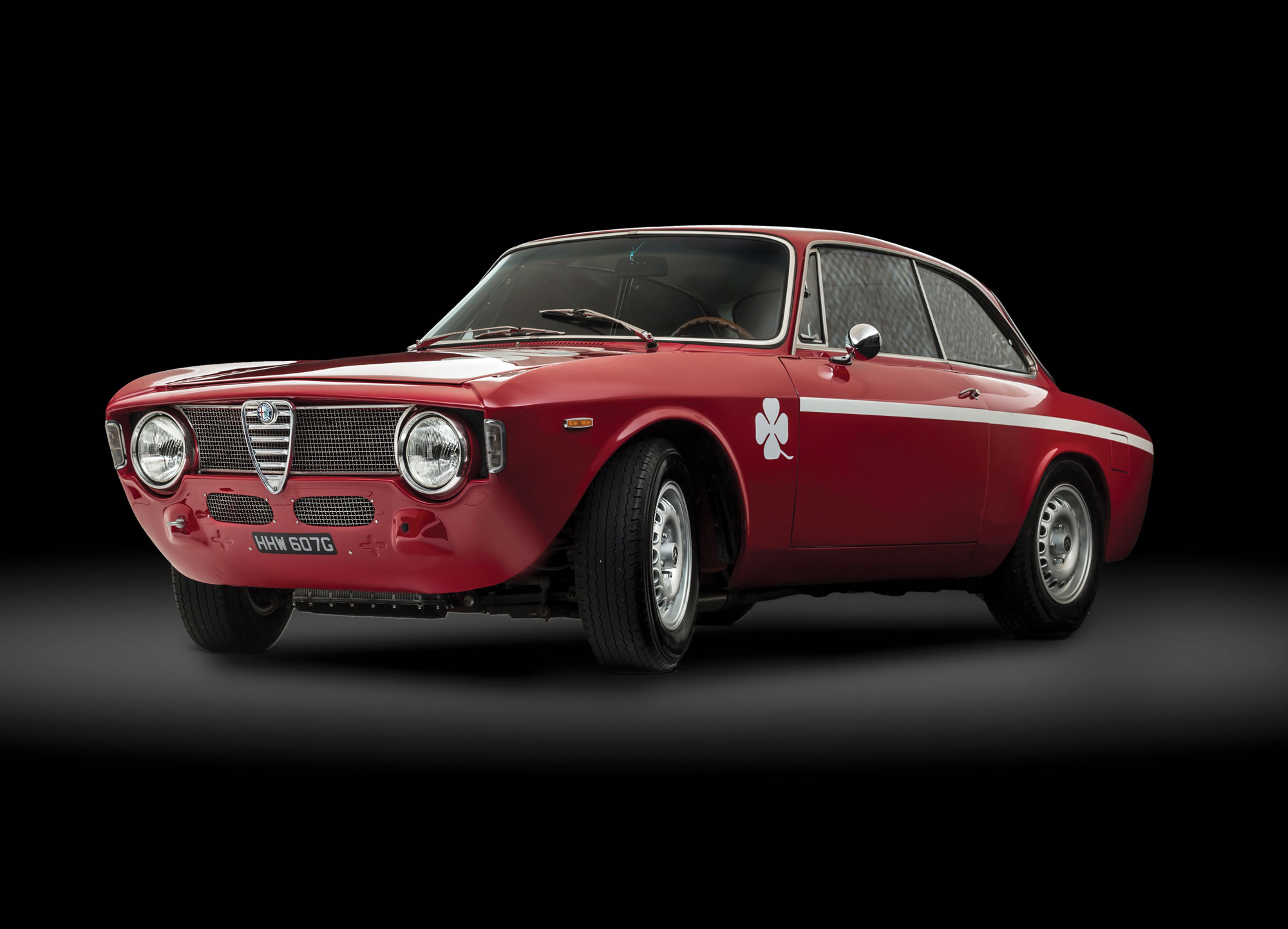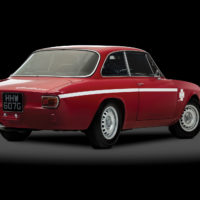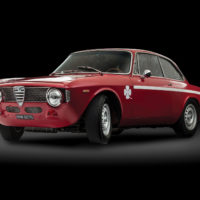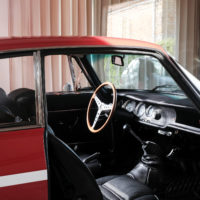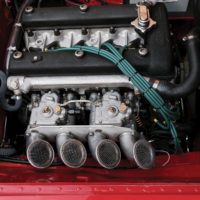SCM Analysis
Detailing
| Vehicle: | 1968 Alfa Romeo Giulia GTA 1300 Junior |
| Years Produced: | 1968–75 |
| Number Produced: | 447 |
| SCM Valuation: | $268,500 |
| Tune Up Cost: | $1,500 |
| Chassis Number Location: | Stamped on the firewall (homologation number hidden by the rear window seal on lower rear window frame) |
| Engine Number Location: | Stamped under carburetors on the right-hand side of block |
| Club Info: | Alfa Romeo Owners Club (AROC) |
| Website: | http://www.aroc-usa.org |
| Alternatives: | 1971–75 BMW 2002 Tii, 1964–65 Porsche 356 C, 1963–77 Alpine A110 |
| Investment Grade: | B |
This car, Lot 118, sold for $255,507 (£189,750), including buyer’s premium, at RM Sotheby’s London auction on November 6, 2021.
It is widely recognized that the coupes of the Series 105 Alfa Romeo are among the most enjoyable cars to drive. If you have had a bad day, a 15-minute drive on a twisty road in an Alfa GT will definitely put a smile back on your face. Then you have the pleasure of looking at it. Indeed, it was penned by design genius Giorgetto Giugiaro while working for Bertone, perhaps the most disruptive coachbuilder of the 1960s.
The final result is an iconic shape, with perfectly proportioned volumes that have aged amazingly well. Alfa 105-series coupes were manufactured from 1965 to ’77 in several series. They were equipped with all-alloy, DOHC 4-cylinder engines in various displacements, all of which are interesting.
A road and race ace
With regard to collectible status, the GTA versions are by far the most desirable. Gran Turismo Alleggerita, or “lightweight,” models, were manufactured for racing, but keeping with Alfa tradition, were still usable on the open road. This was especially true of the Stradale specification, just slightly detuned and equipped with glass windows and more-comfortable seats.
GTA production started with the 1.6-liter engine, but soon Alfa added a 1.3-liter “Junior” version to compete in the smaller-capacity engine class. Amazingly, the 1.3 — with twin Weber 45 DCOE carburetors, twin-plug ignition, reduced stroke and a dedicated block — is the one that ended up being more successful in racing. Thanks to the Peraluman 25 alloy body panels, a 20% weight savings is realized (some 440 fewer pounds), so the limited power is not a big issue.
Only 447 GTA Juniors were manufactured, all equipped with revised suspensions and often sold to racing drivers. Except for the few units tuned up from new by Autodelta, most of the 1300 GTAs were sold in Stradale specification, a perfect starting point for further racing preparation by dozens of tuners — from the most prestigious names to the local village garage. The 1300 GTA had such an extended racing life that by the time it was finished, it was already time to go vintage racing, skipping the usual years of obsolescence.
Original and authentic
Chassis number AR775816 was completed in July 1968 and shipped to an Alfa Romeo dealership in Salerno, in the south of Italy, where it wasn’t registered until December 1970. Unfortunately, nothing is known of what happened to the car in these early 29 months of life, but this GTA’s strong condition seems to rule out heavy action on the track.
While researching another GTA some years ago, I was lucky enough to clear up a similar knowledge gap by talking to the selling Alfa dealer. He reported the car sitting unsold in his showroom for a long time. It was not an easy car to sell and was mostly used to promote the sale of more-humble versions. That could be the case here, but it doesn’t matter much, as the car’s subsequent history is quite clear. Accompanying records are thick and include a £25k invoice (about $33,500) for an engine rebuild in 2021. Our subject GTA is also recognized as authentic by both Alfa Romeo and the U.K.’s Alfa Romeo Club. This is important to note, as plenty of re-creations have been built.
Today, any GTA 1300 Stradale is quite rare. Few were manufactured and many were raced hard, resulting in endless upgrades and transformations from original spec. Bringing back a race-tuned Stradale to original road specification is difficult, with parts being hard to find and expensive. It is evident that the uncommon sale of a well-preserved original Stradale deserves the market’s attention.
Fairly bought on the downslope
In the heady 2015–16 market, GTA Junior Stradale values were up to $350k–$400k, but current market value is now around $230k–$250k. This is mostly because younger generations are looking at more-contemporary models, whether from Alfa Romeo, Audi, BMW or Porsche. As such, I consider this sale a fair result. The seller received a market-correct price and the buyer brought home a wonderful specimen at a bargain compared to only a few years ago.
Regarding future valuation, the ball is in current Alfa Romeo CEO Jean-Philippe Imparato’s court. His love for Alfa Romeo is abundant, as are his capabilities. If he succeeds in truly resurrecting the brand, then values may well skyrocket again for the 105-series GTA. If not, I predict a further slow decline. ♦
(Introductory description courtesy of RM Sotheby’s.)
